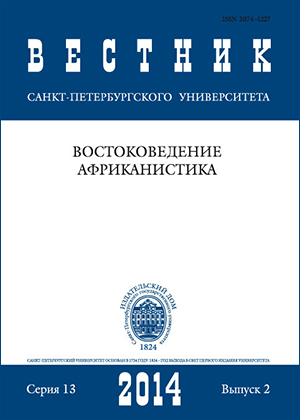Ethno-linguistic structure of the Mesopotamian population in the early 2nd millennium B. C.
Abstract
For millennia during the period of early antiquity (VII–II millennium BC) permanent large-scale displacements of various ethno-cultural groups took place in the territory of the Great Mesopotamia. Such movements could be caused by different factors, including the lack or the depletion of natural resources for livelihood in a specific area, increasing number of the population, territorial differentiation of the quality of life. Migration processes played a crucial role in economic and political development of the region. Relying on archaeological evidence, written records and previous studies (I. M. Diakonoff, I. J. Gelb, P. Steinkeller) In this the author offers a reconstruction of the movement and the interaction of various ethno-cultural groups in the Great Mesopotamian territory during early antiquity and their role in the establishing of statehood and the formating of political structures. Refs 23. Figs 1.
Keywords:
Great Mesopotamia, Southern Mesopotamia, Upper Mesopotamia, Akkadian, Amorite, early antiquity, ethno-cultural groups, Semitic languages, movement, interaction
Downloads
References
Downloads
Published
How to Cite
Issue
Section
License
Articles of "Vestnik of Saint Petersburg University. Asian and African Studies" are open access distributed under the terms of the License Agreement with Saint Petersburg State University, which permits to the authors unrestricted distribution and self-archiving free of charge.





